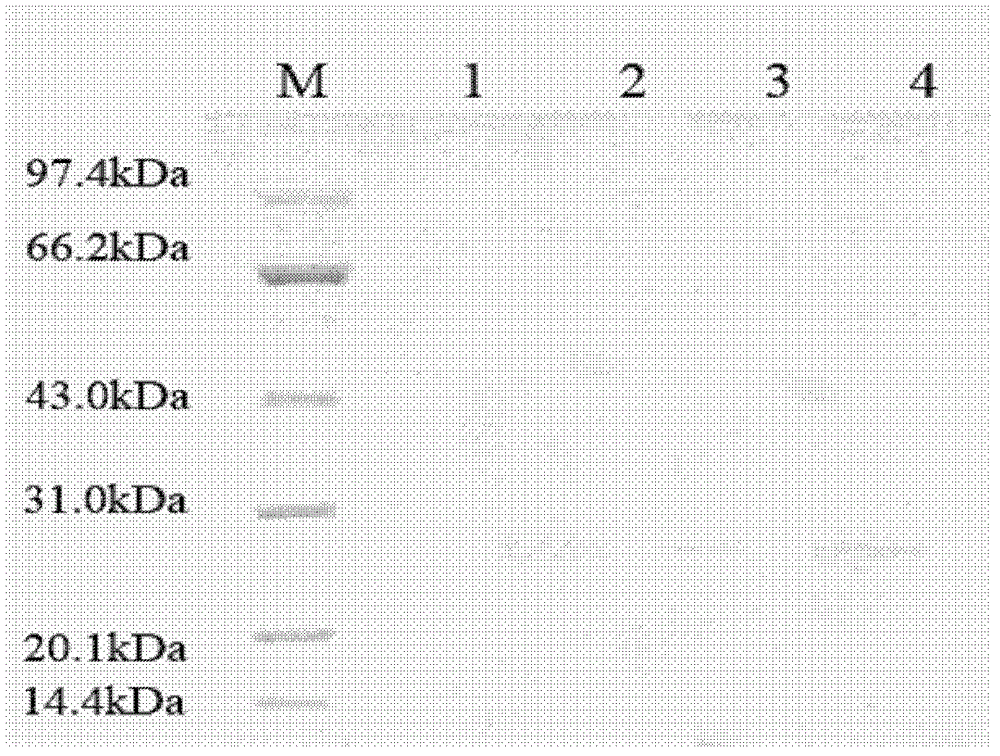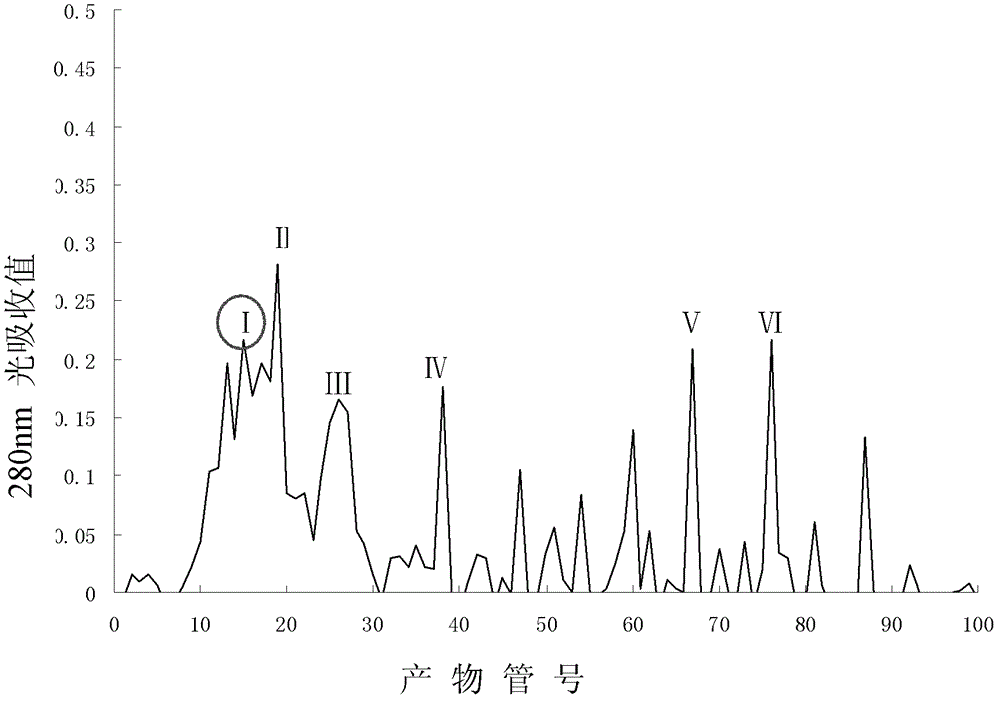Blood pressure lowering functional polypeptide from pig blood and application thereof
A technology that lowers blood pressure and has multiple functions. It is applied in the fields of peptides, applications, and cardiovascular system diseases. It can solve problems such as unclear active ingredients, difficulty in deep utilization, and insufficient attention to resources, and achieve good market prospects.
- Summary
- Abstract
- Description
- Claims
- Application Information
AI Technical Summary
Problems solved by technology
Method used
Image
Examples
Embodiment 1
[0033] Example 1 In vitro enzymatic hydrolysis of pig blood simulating in vivo metabolism
[0034] The main component of pig blood after drying is protein, with a content of nearly 20%, among which hemoglobin in blood cells accounts for 75% of the total protein in whole blood. After hemoglobin is hydrolyzed, it is degraded into small molecule peptide compounds with different chain lengths. The main color and odor substance in pig blood is heme, which seriously interferes with the extraction and separation of effective substances, content determination, molecular weight detection and other research. When pig blood enters the human body, it is first degraded by digestive enzymes into relatively stable polypeptides (molecular weight range is 0.1kDa ~ 10kDa). Small peptides with a molecular weight of less than 3kDa are usually biologically active, and these small peptides are also easily absorbed by the human body. This kind of small peptide is also a common substance for the eff...
Embodiment 2
[0113] Example 2 Separation and identification of pig blood blood pressure-lowering functional polypeptide
[0114] The pathogenesis of hypertension is generally considered to be that angiotensinase (ACE) excessively converts angiotensin I (Ang I) into angiotensin II (Ang II) that raises blood pressure, and at the same time, ACE degrades bradykinin, making it inactive. live. Therefore, by inhibiting the activity of ACE, the production of angiotensin II is reduced, and the degradation (inactivation) of bradykinin is resisted, thereby lowering blood pressure. Cushman first proposed ACE from rabbit lung, and established a method for measuring ACE inhibitory activity. Later, many researchers made changes on this basis. In this experiment, the antihypertensive functional polypeptide of pig blood was screened out by simulating the inhibitory effect on ACE in vivo in vitro.
[0115] In this experiment, after separation by gel filtration, RP-HPLC was used for fine separation. The se...
Embodiment 3
[0166] Example 3 Pharmacological Verification of Antihypertensive Peptide
[0167] The antihypertensive peptides with ACE inhibitory activity confirmed by in vitro experiments do not necessarily all have antihypertensive effect in vivo. Antihypertensive peptides must enter the blood circulation to exert their antihypertensive effect. If taken orally, they are easily decomposed by enzymes in the digestive tract or degraded by ACE first, and may become inactive short peptides or amino acids. Can the antihypertensive peptide obtained in the present invention successfully pass through the barrier of the gastrointestinal tract? Through in vivo experiments such as animal experiments or clinical trials, the effect of the hypotensive peptide can be more accurately judged.
[0168] In previous experiments, 6 hypotensive peptides with ACE inhibitory activity have been obtained. In order to further verify the actual antihypertensive effect of these antihypertensive peptides, this exper...
PUM
| Property | Measurement | Unit |
|---|---|---|
| molecular weight | aaaaa | aaaaa |
| molecular weight | aaaaa | aaaaa |
Abstract
Description
Claims
Application Information
 Login to View More
Login to View More - R&D
- Intellectual Property
- Life Sciences
- Materials
- Tech Scout
- Unparalleled Data Quality
- Higher Quality Content
- 60% Fewer Hallucinations
Browse by: Latest US Patents, China's latest patents, Technical Efficacy Thesaurus, Application Domain, Technology Topic, Popular Technical Reports.
© 2025 PatSnap. All rights reserved.Legal|Privacy policy|Modern Slavery Act Transparency Statement|Sitemap|About US| Contact US: help@patsnap.com



